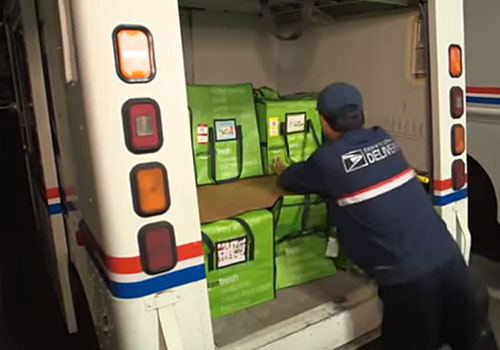
Find the problem, then solve it
There have been many optimistic new startups in global supply-chain visibility and management systems in recent years, but few have survived in their original form. G-Log founder Mitch Weseley thinks he knows why
No one's going to put up a sign saying 'the recession is over.' We'll just see slow but steady growth, and at some point this may start to accelerate."
That sober but relatively positive assessment of the current state of the logistics IT market comes from Mitch Weseley, the American president and chief executive officer of systems house G-Log.
He can perhaps afford to take a positive view. At the start of last year, his organisation had just one customer among the world's top 30 companies. By the end of the year, he says it had no fewer than seven, including both manufacturers and third-party logistics companies. One of the first was Exel; the latest include Germany's Kuehne & Nagel and Australia's Toll Group.
Indeed, G-Log "is hitting all planned targets," according to Weseley, "and signing some of the biggest and most exciting companies in the market."
G-Log was one of the first suppliers to offer an enterprise software product built around the Internet from the ground up. Its GC3 suite (Global Command and Control Centre) was created with tools such as Java and Enterprise Java Beans. It uses standard Web browsers for its interface and XML as its communication medium.
"Very few of our clients have done any major Web-based software implementation before," Weseley says. "In the past everything was client-server and Unix-based. But they're realised they have to move in this direction to keep on top of the game."
The G-Log suite embodies a range of capabilities around the basic offer of real-time global logistics management. "We touch on order management, warehouse management, supply-chain execution, ERP and visibility," Weseley says. "We also have touch points with our customers' clients and suppliers. The fact is that transport is an ideal place for building a Web-based application."
However, he emphasises that G-Log doesn't try to handle every aspect of the supply chain. "We can replace the functionality of a lot of other systems, but we may also augment them."
e.logistics Magazine reported on the G-Log suite in the Systems Focus slot just under two years ago, when it was still a relative newcomer. Already it was making waves in many sectors, but its growth has gathered momentum sharply in the past year.
Why is this? Weseley claims it is because G-Log "was one of the few developers that considered the business problem first, and then looked at the technologies that were available." He draws a distinction with other developers, who he believes started with the technology, then looked for problems needing their solutions.
"Two years ago," he says, "most people's perspective on the Internet was dominated by purchasing and taking out the middle man. Developers concentrated on things like online auctions and load-matching. Often they put a product on to the market within a couple of months, working on the basis that if they weren't first in the field, they weren't going to succeed."
As we reported in our previous article, G-Log took a very different approach. "Our product took 18 months to develop," Weseley says. "We mapped out the right problem to solve first, then tackled it in a methodical way."
He says that when his team first sought financial backing, "investors looked at us as if we had three heads." But he says their "silly vision" of staying the course eventually paid off, "and we designed the product right."
He admits that some potential customers bought elsewhere when it became clear that the G-Log solution would not be available soon enough. "But some of those have since come back to us." Besides, he says, "a lot of our rivals didn't really sell that much product. Often their launches were little more than under-funded pilots. Very few indeed actually earned the millions they were hoping for."
Although Mitch Weseley is clearly proud of his company's insistence on sticking to its original vision, he does admit that serendipity played a partial role in its success. "Picking the right time to start developing a new software project is critical," he says. "All technologies come and go. We simply happened to start ours at the right time."
He points out that when they embarked on the development process, Internet programming with Java was really coming into its own. "If we'd started five or six years ago, we wouldn't have been able to do this. As it was, we knew we were on a solid footing."
What is slightly more surprising, he points out, is that the technology hasn't really moved on much since that time. "If we were creating our software from scratch today, our approach would be almost identical. No one has any idea what the next revolution will be. That's a fairly rare occurrence in this business."
One aspect where there has been steady improvement is in the availability of enterprise application integration tools. "Integration is the most difficult aspect of any implementation," Weseley says, "but the tools are infinitely better now than they were five years ago." He says clients are free to pick their own EAI tools, although G-Log can do much of the hard work behind the job.
G-Log can manage freight movements by any transport mode, Weseley says, and can help users choose between modes. "But the issue is more one of routing than of mode selection." What is important to many customers, he says, is visibility, which has driven much of the development behind the system. "Customers want to know where a product is at any given time, and what carrier is handling it." This capability is provided by a system of alerts and exception reporting.
In the course of its three and a half years, G-Log has built up some significant critical mass. It now has around 160 staff in its native US, plus around thirty in the UK, the Netherlands and Germany. It is likely to take on more soon. "We've kept our size flat for a while, but now the volume of business has caught up with our size, and we might have to grow again."
Several of Mitch Weseley's co-founders emerged from a background at Manugistics, and all development work is still done in-house in Pennsylvania. "There's no offshore resource," Weseley says.
While G-Log will sometimes act a lead contractor on a project, it is equally happy to work with other suppliers. "We might be brought in by an ERP supplier like Retek, or a WMS specialist, or a consultant like CAP Gemini. We can fit in anywhere in that spectrum."
In some implementations the company will host the software itself, while in others it will manage the hosting. Alternatively the client can host the system itself. "But hosting poses a complex range of implementation issues such as firewall maintenance, and we've not found many clients that are accustomed to doing all this."
Weseley is under no illusion that logistics software has become an easy sell. On the contrary, as he puts it: "This is probably the hardest time ever for the adoption of technology for its own sake. Return on investment is now the key focus for most users."
However, he is confident that G-Log has a head start on many of its rivals – not least because of its decision to offer a Web-based product. "There are so many advantages," he says. And he is adamant that cutting spending on development can never be the solution to a depressed economy. "If you do that, where are you going to be in 18 months' time? You'd just be postponing the inevitable."












